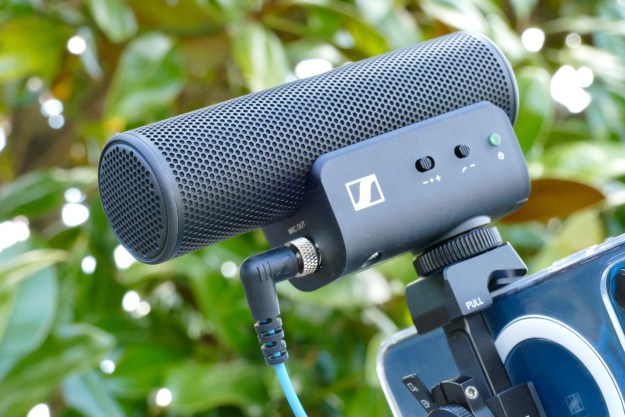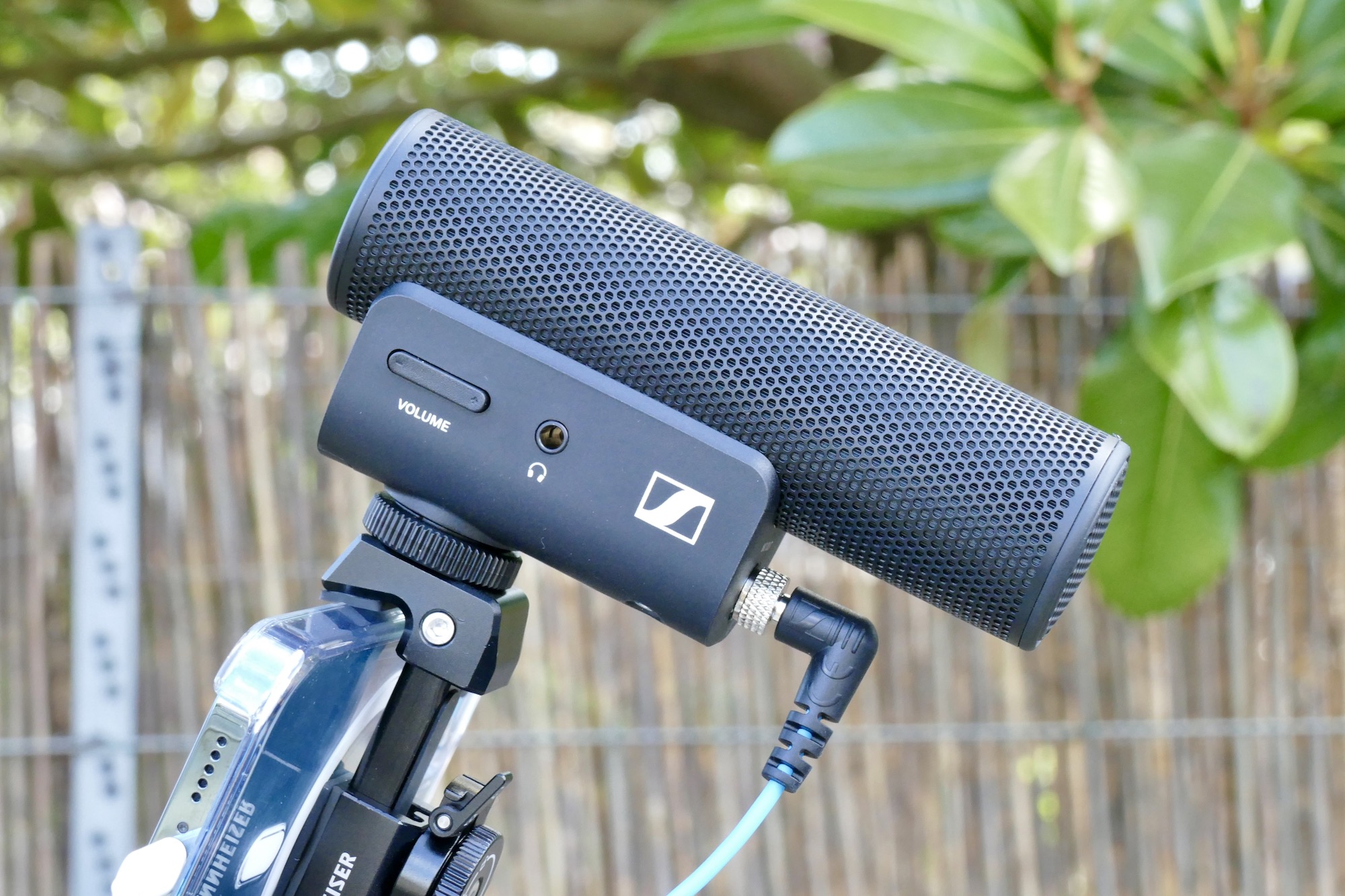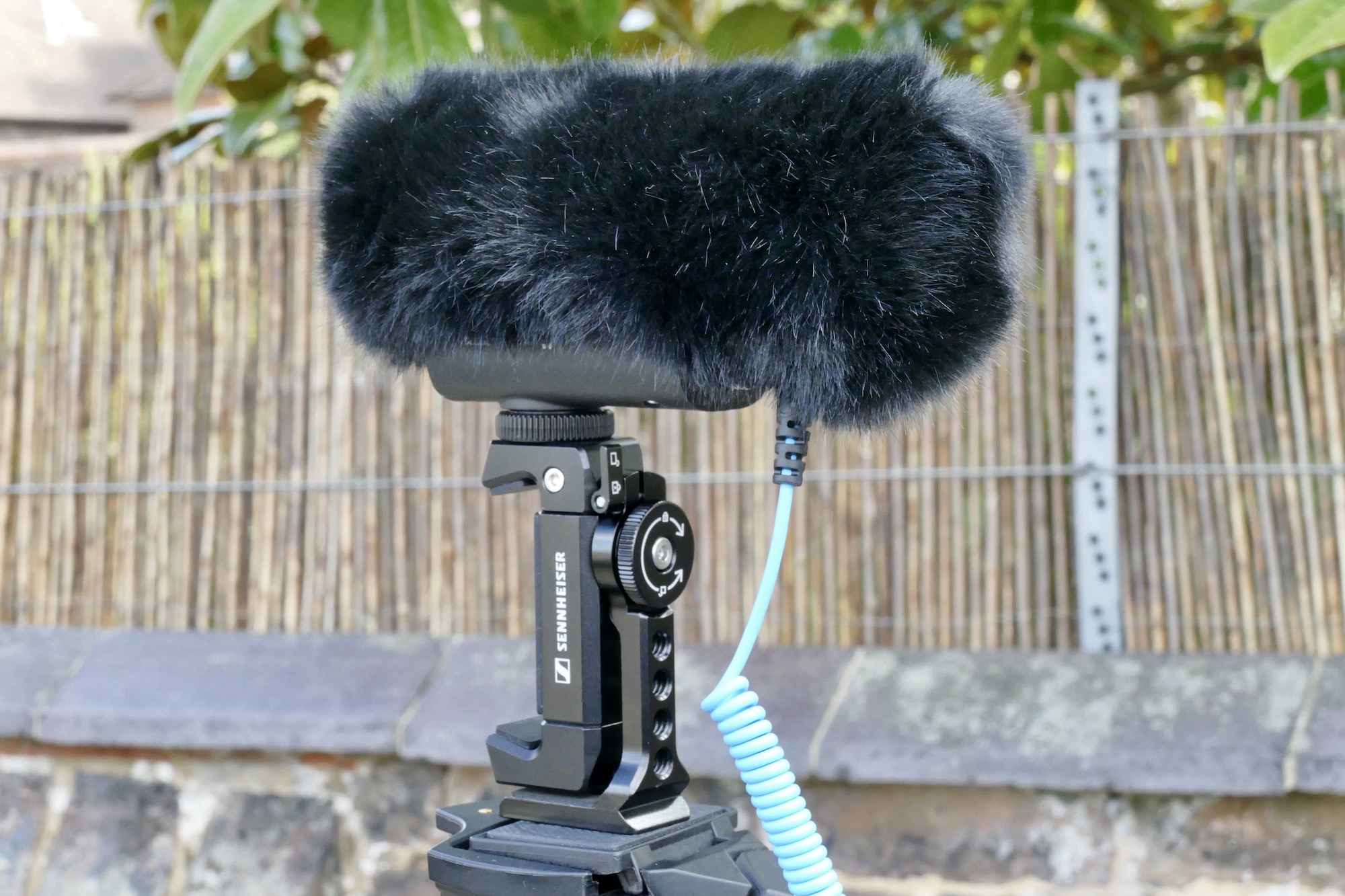
“The Sennheiser MKE 400 Mobile kit helps you realize your smartphone's potential as a mobile vlogging tool, by adding high-quality audio and a comprehensive set of accessories.”
- Great-quality audio
- Complete set of accessories included
- Compatible with phones and cameras
- Headphone monitoring feature
- Requires you to learn new skills to use it well
- Volume levels can be low
Your smartphone almost certainly has a highly capable video camera, and because it’s always with you, it’s really the perfect on-the-move vlogging and video-creation tool. Except it’s always going to be let down by the built-in microphone, which has to perform too many different jobs and simply can’t be great at them all.
Solving the problem has frustrated me for a while, as very few of the options available are idea. Now, Sennheiser has launched the MKE 400 Mobile Kit, which is designed to bring pro-grade audio recording to videos shot on your phone. Could this really be what I was looking for? I’ve found out.
Why use your phone?
Every iPhone since the iPhone 6S has recorded 4K-resolution video, while the Samsung Galaxy S20 Ultra and latest Galaxy S21 series phones shoot 8K video, so taking high-quality video with your phone hasn’t been a concern for some time. If this is a big priority for you, companies like Moment make impressive lens accessories for phones, and there are many video-editing apps available for both iOS and Android. Your phone really is a one-stop video-creation shop.

Well, almost. Good audio quality is essential if you’re planning to publish your videos. N one will want to watch if they can’t hear you, or if all they can hear is wind noise or distortion. The microphone on your smartphone is a compromise, as it has to do various different jobs, and making you sound good on video is not that high up on the list of priorities. It’s not suitable for distance recording, or in loud environments.
There are various options available to cure this. Lavalier microphones are popular but you will be tied down with a wire, or you could invest in an expensive wireless microphone system. But there’s a fine line between doing this, and considering moving to the next level entirely with a DSLR-based setup, and the money really starts to add up at this point. It can feel demoralizing looking at the different options, and sometimes unnecessary when your phone is right there and shoots perfectly good video.
Everything you need
What makes the MKE 400 Mobile Kit special is that it’s designed mainly for use with a smartphone. Inside the box is the Sennheiser MKE 400 shotgun microphone, a robust aluminum

The MKE 400 attaches to the smartphone clamp with a standard cold shoe mount, as it uses two AAA batteries for its own power. The mount itself has multiple 1/4-inch threaded holes to attach it to a tripod, plus a single 3/8-inch threaded hole, and a rubber-lined clamp for your phone. This can be rotated from portrait to landscape orientation, and the clamp can be locked into place so it doesn’t move — and so your phone won’t come loose.
Manfrotto’s Pixi tripod is small but very sturdy. It is made from stainless steel and has a maximum height of 5.3 inches, with each of the feet ending in a rubber grip for additional stability. It’s fine for use with a phone, but Manfrotto doesn’t recommend it for supporting anything heavier than 2.25 pounds, so it may not work well with some DSLRs. Press the button on the side firmly and the head can be repositioned, giving it plenty of versatility.

The Pixi tripod can be used on a surface or handheld, the clamp is big enough for most phones — I’ve used it with the iPhone 12 Pro and the Samsung Galaxy S21 Ultra — and the connection system is simple. You’re up and ready in less than five minutes, it’s incredibly portable, and very solidly made.
What about the microphone?
The MKE 400 is a shotgun microphone with a supercardioid polar pattern, meaning it’s designed to pick up audio from directly in front and slightly behind, but not so much from the sides, to cut down on unwanted ambient sound. The MKE 400 name has been used by Sennheiser for years, but the company has updated the design and added features to this newly launched model.
The windscreen and shock mounting have been placed inside the metal microphone case for a more compact, visually pleasing look, plus a “dead cat” furry cover is also included in the box to reduce wind noise even more. On the side of the microphone is a volume-controlled 3.5mm headphone output to monitor the audio, a three-stage sensitivity gain control, and a low-pass filter.

Two AAA batteries are inside the box ready to power the microphone, and Sennheiser estimates they will last for 100 hours before needing to be replaced. It weighs 93 grams, so about half of most modern smartphones, but still feels sturdy. It also looks really modern and professional, while simply having the Sennheiser name on the side gives it a huge amount of credibility. It may sound odd, but this is a big deal.
How does it sound?
I’ve recorded audio with the Sennheiser MKE 400 outside when walking around, and inside when seated, plus in the car and other relatively noisy environments. I’ve used it connected to an iPhone 12 Pro through the included 3.5mm cable and a Lightning dongle. It has performed extremely well at all times, but most importantly of all, it’s a vast improvement over the audio recordings you’d get if you just used the built-in microphone, or other cheaper microphones.
The most obvious difference is in the drastic reduction of background hiss and ambient sound. The MKE 400 records your voice clearly, while still taking in just the right amount of ambient sound. For example, when recording on an early morning walk, the microphone still recorded the sounds of the surrounding woodlands for a natural, pleasing tone that accurately captures your environment without overpowering your voice.

It also makes my voice sound less artificial, removing the echo and harshness you get from the iPhone 12 Pro’s microphone. I also compared it to a Rode SmartLav+ lavalier microphone, and again there was much less background hiss and echo. Outside, it operates well at around a meter to two meters distance, provided you’re facing in the microphone’s general direction. It also records well when you’re behind the microphone, as long as you’re not too far away. Inside a moving car, when behind the microphone, there’s a little more echo, but because the ambient sound is minimized, it doesn’t ruin the recording.
The downsides come in learning how to use the MKE 400 to the best of its ability. While it’s not especially complicated, there’s quite a lot of trial and error involved, which isn’t really found using a simple plug-in lavalier microphone. For example, the volume is quite low with the gain set at normal, and to hear it well when played back on the iPhone, the volume needs to be at about 75%. There is a three-stage gain control, but when you turn this up to the high level, it increases overall noise, so there is a tradeoff between recording at a greater distance and introducing more ambient sound.
The headphone jack on the microphone body lets you hear what’s being recorded, which is helpful to a certain extent. It’s hard to do this if you’re on your own and want to check distance recording, for example. I don’t think the MKE 400 requires pro-level experience or knowledge to use, but I do think you need patience and a willingness to learn about sound recording to get the best from it.
Using the Sennheiser MKE 400 has been freeing. I’m used to recording with a wired lavalier microphone, and not having to worry about the wire is great. I’m also terrible about forgetting to clip the mic back on if I have to move away from the camera, which isn’t something you worry about with the MKE 400. The sound quality is great, too. It also works with the camera app or voice recorder app, and a DSLR if needed, so it’s hard to imagine a situation where you’d want much else.
Price and availability
The Sennheiser MKE 400 Mobile kit costs $230, or 200 British pounds. It’s available to buy now through Sennheiser’s own online store, or through other Sennheiser dealers.
Our take
The Sennheiser MKE 400 Mobile Kit is a comprehensive, high-quality, easy to use sound-recording system for your phone. Although it’s made for a smartphone, don’t think this means it’s basic, as all the features here help you record the best audio possible with your
Sennheiser’s decision to make it a full kit is inspired, as you don’t need to buy anything else, so it’s ideal for anyone just getting started or someone wanting to upgrade from a more basic setup. Despite this, there’s nothing simple about the performance, and audio quality is a vast improvement over the built-in mic on your phone, and even competent lavalier microphones too.
The versatility means it’s suitable for handheld, camera-facing recordings, desktop use, outside recordings, and even in noisy environments like the inside of a moving car — all without wires or a Bluetooth wireless connection. It’s not cheap, but the price reflects the ability, quality, and welcome simplicity of the overall package.
Is there a better alternative?
There are various shotgun microphones the work with your smartphone, but very few come with the range of accessories the MKE 400 Mobile Kit provides. Prices also vary wildly. This Comica kit with a wireless microphone system costs $170, while Rode’s VideoMic camera mount set costs $147. A good lavalier microphone like the Rode SmartLav+ costs around $90, and Audio Technica’s ATR3350xiS microphone costs about $35.
All will do a better job at recording audio than the microphone built into your phone, but consider how and where you’ll be recording before deciding which one to buy. Sennheiser is never the cheapest brand, but quality is almost always assured.
How long will it last?
The components included in the Mobile Kit are rugged and robust, being mostly made from various metals, with only the base of the microphone made of plastic. The universal 3.5mm headphone jack to connect the microphone to your phone requires a dongle if it doesn’t have the corresponding port, so make sure you have one of those on hand. There are no apps that need to be installed, and no firmware to update either. The MKE 400 will last for years provided it’s treated well.
Should you buy it?
Yes. It’s everything you need to vastly improve the audio recorded by your smartphone.








